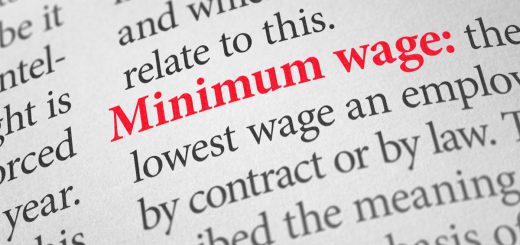How Workers Benefit From the Inflation Reduction Act

Ken Green
CEO & Founder
UnionTrack
In August 2022, President Joe Biden signed the Inflation Reduction Act of 2022 (IRA) into law.
That law has been widely lauded as a victory for working people because it “puts the interests of working families and retirees before the ultra-wealthy and Wall Street,” asserts the United Autoworkers Union (UAW). It does this by:
- Lowering healthcare costs, which keeps more money in people’s pockets.
- Reforming the tax code to make it more equitable while also funding the initiatives of the legislation.
- Investing in the growth of clean energy to combat climate change, which will help escalate job creation.
Through these efforts, the IRA will achieve its primary goal of combatting the skyrocketing inflation that has devastated the financial stability of working families. “It will generally work in the right direction and help the Federal Reserve, which has the primary responsibility for getting a hold of inflation,” says Shai Akabas, director of economic policy at the Bipartisan Policy Center.
Here’s a closer look at the Inflation Reduction Act’s three key initiatives.
It Saves Working People Money on Healthcare Costs
Many Americans, especially working-class people, struggle with the rising costs of healthcare, particularly prescription drug costs. One way this bill seeks to combat inflation is to bring those prices under control.
“The healthcare provisions included in this legislation will reduce costs for working families and retirees,” explains the International Association of Machinists and Aerospace Workers (IAMAW). It’s a relief sorely needed by millions.
According to research by the Peter G. Peterson Foundation, on average, “the U.S. spends twice as much on prescription drugs as other comparatively wealthy nations.”
That’s largely because drug companies have unchecked control on pricing. “In the US, we’re unique in letting drug companies basically set their own prices,” says Andrew Mulcahy, senior policy researcher at the RAND Corporation.
The Inflation Reduction Act provides relief to American families “by capping costs for people with Medicare and negotiating some high-cost drug prices,” explains Golden State Opportunity. Because of the legislation, “Americans on Medicare won’t have to spend more than $35 a month on insulin or $2,000 a year at the pharmacy.”
The organization also notes that the bill extends “subsidies for families who earn up to 600 percent of the federal poverty line” to help make healthcare coverage more affordable for more families.
Ultimately, more people will have access to more affordable healthcare coverage and prescription medications, which means more money to spend on other necessities.

It Makes the Tax Code Fairer for Everyone
The ambitions of the Inflation Reduction Act will be financed largely by revenues gained from changes in the tax code that reduce pervasive inequalities in tax obligations. The bill tackles a number of different issues on this initiative.
For one, it addresses tax avoidance by large corporations by instituting a minimum corporate tax of 15 percent on corporations that report at least $1 billion in profits. The Institute on Taxation and Economic Policy (ITEP) reported in 2021 that “at least 55 of the largest corporations in America paid no federal corporate income taxes in their most recent fiscal year” by taking advantage of tax breaks.
“There is absolutely no reason that some companies should be able to game the system while others are paying their fair share,” says Amy Hanauer, executive director of ITEP. “The IRA will help get us to a more level playing field.”
The legislation also imposes a new 1-percent excise tax on stock buybacks. It’s common for corporations to return additional profits to shareholders via stock buybacks rather than invest those monies in raising workers’ wages or improving facilities. The excise tax discourages this behavior and puts money in the coffer for IRA initiatives.
The IRA also provides $80 million in funding to the IRS over 10 years. This will help the IRS “go after this giant unpaid tax bill of the wealthiest among us to reduce the federal budget deficit and pay for the investments needed to tame inflation and build a more equitable, and thus much stronger, economy,” notes David Mitchell, director of government and external relations at the Washington Center for Equitable Growth.

It Carves a Path for Job Growth in Clean Industries
At its core, the Inflation Reduction Act is both a climate change-fighting and a jobs bill.
“The Inflation Reduction Act’s massive investments to fight the climate crisis will also help improve job quality in clean energy industries and incentivize the expansion of workforce training pathways into these jobs, which will help lift many people into the middle class,” Mike Williams, Marina Zhavoronkova, and David Madland at the Center for American Progress write.
The bill offers significant financial incentives in the form of tax credits to companies that offer good jobs at prevailing wages and registered apprenticeship programs to create a much-needed labor pipeline for the development of the sector. The base tax credit increases from 6 percent to 30 percent for any project that creates at least 1 megawatt of clean power, and meets the prevailing wage and apprenticeship requirements.
Also, clean energy “developers will be eligible for additional benefits if they build renewable projects in low-income or fossil fuel dependent communities, and if they build with American-made materials,” explains Pam Fendt, president of the Milwaukee Area Labor Council and a member of Laborers’ Local 113 (LIUNA).
According to an analysis conducted by Political Economy Research Institute (PERI) at the University of Massachusetts for the BlueGreen Alliance, the IRA has the potential to create more than 9 million jobs over the next 10 years. Those estimates break down like this:
- 5 million clean energy jobs.
- 900,000 clean manufacturing jobs.
- 400,000 clean transportation jobs.
- 900,000 jobs in efficient building construction.
- 150,000 environmental justice jobs.
- 600,000 natural infrastructure jobs.
“Few pieces of legislation this century have come close to such sweeping potential for good job creation,” writes the BlueGreen Alliance. “… [t]he bill’s unprecedented investments offer an unparalleled opportunity for workers and communities to capture the economic gains of the growing clean economy.”
So far, the bill seems to be stimulating the clean energy sector as intended. According to data presented by the nonprofit Climate Power, as of late January 2023 more than 100,000 clean energy jobs have been created, and 90 new clean energy projects are in development.
“Thanks to President Biden’s affordable clean energy plan, businesses are investing in manufacturing like never before, and planning to create good paying jobs in every corner of the country,” says Lori Lodes, executive director of Climate Power.
This is positive news for workers who have been struggling to gain access to higher-paying, sustainable jobs. It’s also good news for the unions that support them because it’s an opportunity to organize in an expanding sector.
As unions learn more about how the Inflation Reduction Act impacts workers and how to take advantage of that opportunity, leaders can use a tool like UnionTrack® ENGAGE® to connect with more workers, share information with them, and engage them in conversations.
Images used under license from Shutterstock.com.







